All in the (Foundry) Family: Meet Susannah
- Posted on
- By Jay
- Posted in THE FOUNDRY FAMILY, The Foundry World
- 0

While adorable dogs, the magical smell of beeswax candles, and oodles of gorgeous glassware are pretty darn nice, the thing that REALLY makes The Foundry feel like home is our family. While well-made objects of beauty and use make the daily rhythms of life more pleasant + effortless, like in any home, it's the people inside that really make it glow. Since not all of you live within striking distance of our real-life shop, we wanted to bring a little Foundry Family magic your way (if we close our eyes and *wish* it will almost be like we all live together on the same block).
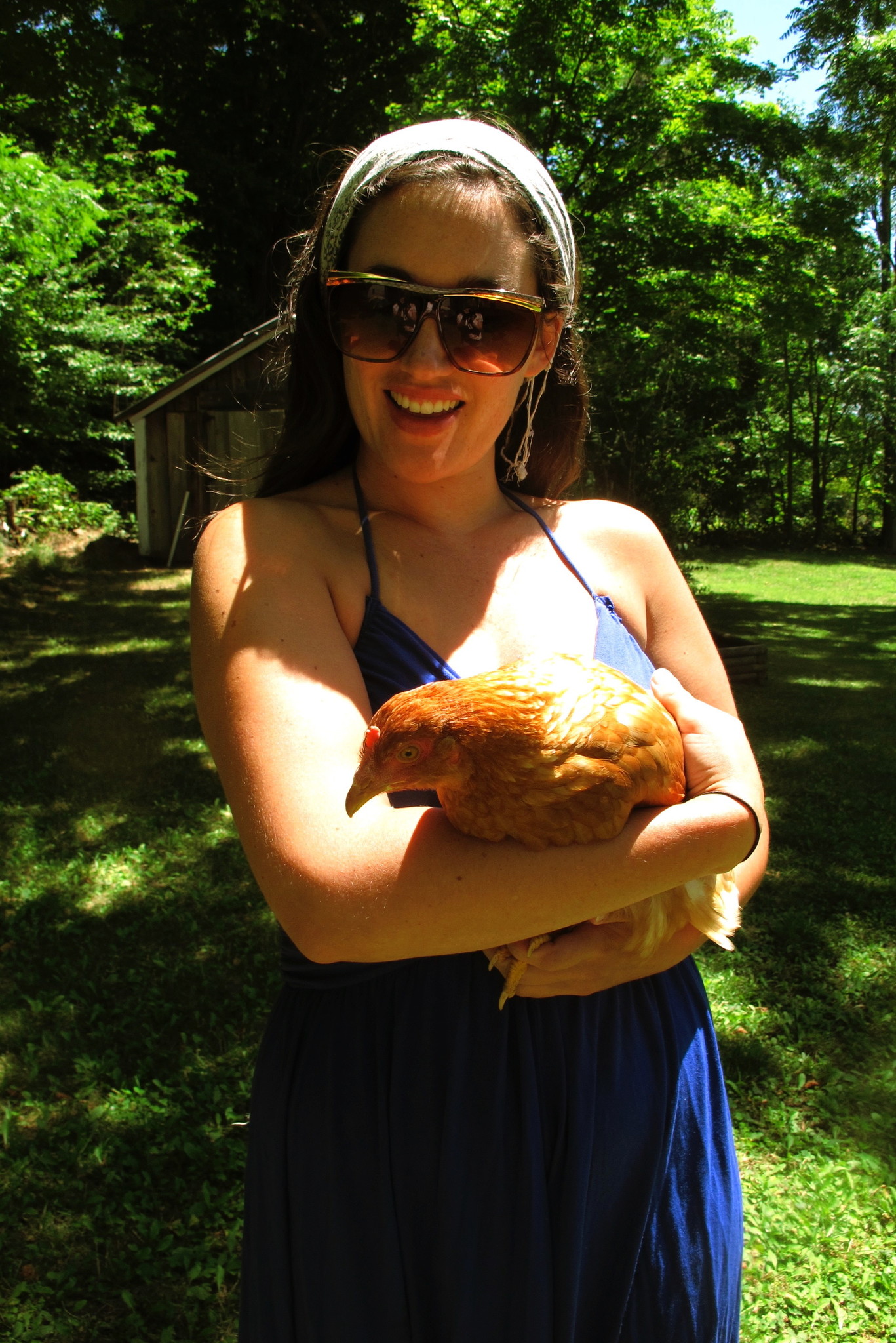
Next up in our getting-to-know-you series, SUSANNAH, the most far-flung member of our Foundry Family. Our wordsmith extraordinaire, she helps tell the Foundry story from her farmhouse in Crozet, VA, where she lives with her daughter Lois, banjo-picking husband Andrew, slinky sable cat Nipsey Russell, and 120,000 honeybees. For this interview we enlisted the help of another member of the extended Foundry Family, Anna’s brother (in-law) from another mother, Jay (also author of the beautiful poetry volume, BLOOM, available right here at The Foundry).

Jay, left, after officiating Susannah's wedding.
J: For the record, state your name and your location.
S: I am Susannah. I live in the Blue Ridge Mountains of Virginia and I'm currently in my 1890 farm house, which is called Fennario. The babe is that way [points left], and the bees are that way [points right].
J: What do you do as part of The Foundry?
S: Well, I have been given the incredible opportunity to help translate the Foundry magic that exists in the real-life wilds of Minneapolis to the even wilder wilds of the internet. There's so much big magic that happens in that place. The life and world that The Foundry has built is so tactile and beautiful, and you want to touch it, and you want to live in it. That's hard to feel on the computer, so I try to hold the wooden spoons in my hand and then explain why it's the best-feeling wooden spoon I've ever felt (because it is) and to get Ruby and Anna and Lillian and the whole wonderful cast of characters there accurately represented here on thefoundryhomegoods.com.
I write the product descriptions and I work with Anna, of course, and Lillian, the deeply magical shop manager. Every so often a magical parcel of Foundry goods will arrive on my doorstep with a note from Lillian, like, YOU HAVE TO FEEL THIS LINEN! What a dream. Whenever there's a new parcel of beauty that comes in, Lillian and I are feverishly typing comments back and forth into a Google document that's like, "I've been using the horsehair dish brush to clean eggs from the chicken coop, should I include that in the description" and she's like, "ABSOLUTELY" I'm like, "Ok cool, but I won't mention chicken poop" and she's like, "Well, maybe include that you don't also use it for dishes afterwards!" It's this collaborative magic making.
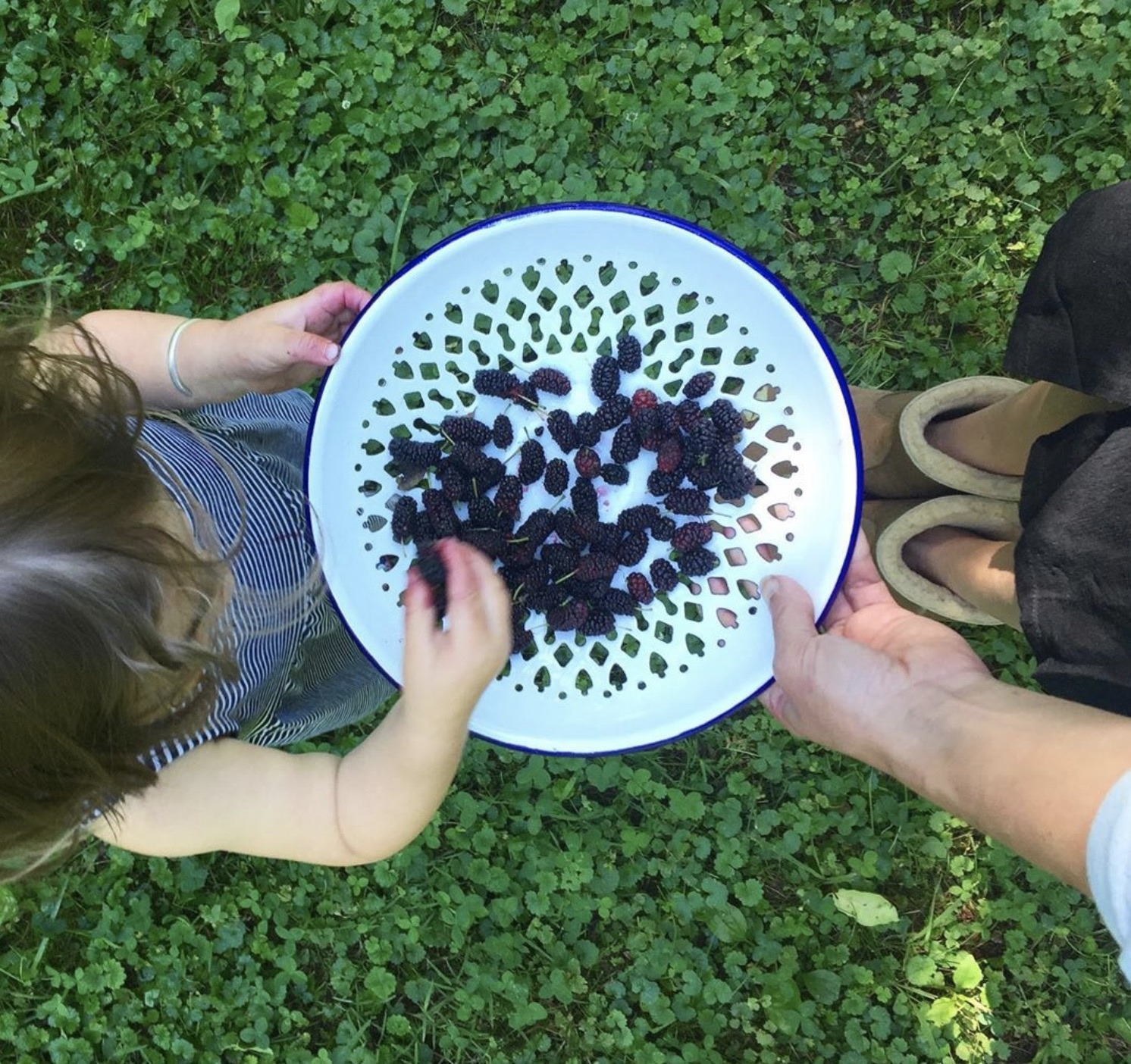
J: It sounds like the objects are inspiring and the people are inspiring to you as a writer.
S: Absolutely. Yeah, and the relationship of the objects to the people in this way. I do a lot of work with other retail/eCommerce and people are always want to manufacture some narrative arc of the objects being informed by the people that use them and love them, and, for The Foundry, that's just true.
J: Can you expand a little bit more on that #true? I mean, why is that important for a brand to be authentic?
S: It feels lame to say or maybe obvious, but this sort of "authenticity" is a thing that brands want the most. And it's ironic because it's like "realness" is the ONE thing that you can't force, it just must be.
And for The Foundry, all of these stories are beautiful AND they are also just true. The reason that they chose this maker versus that maker, this brush versus that brush is because there's a resonant communication between a value set, almost. Like: these are the things that we value in our business, but these are also the things that we value in our own lives and in our own homes. It's this really beautiful, intimate feedback loop. When you're dealing with things people use and live with and love and are bringing into their precious home-space, the story of the production methods, or the materials, or the tradition or history of the maker or of object itself, it's important.
Something that's not related to this but is something that I really love is this gift that I get to do these deep dives into these different artisan traditions and cultural traditions for the work on some of the product descriptions that I love. It is such a gift, and I will just go down these rabbit holes. If it's enamelware or something, I'll go back and research how enamel was first made and discovered, the kinds of conditions that made enamel successful, and why it became so popular during certain times.
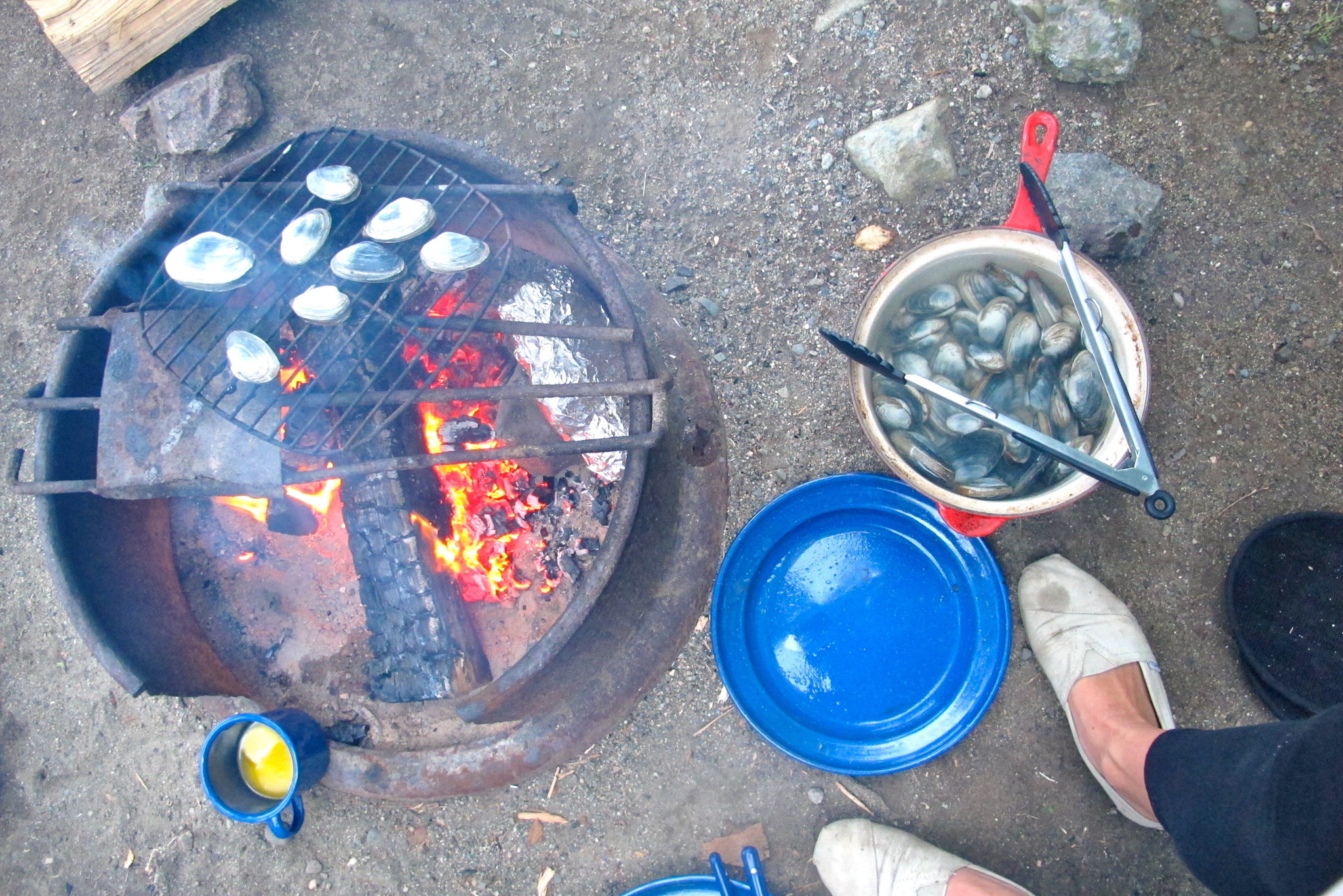
Susannah, camping in Cobscook Bay, Maine, melting butter for fresh-dug clams in her old traveling enamel set.
I think enamel, specifically in America at least, came to prominence during The Great Depression even though it had commercially been a technique that had been used in France since the early 1800s. But it was cheap, durable, and beautiful. So it was a thing that everyone's grandmother had some kind of enamel thing, and they got it during The Great Depression because it was something that they could afford that then they could strap on to their poor Tom Joad Dust Bowl car and take to California with them, and it lasted there.
J: Is that one of the cutting room floor Foundry Home Goods taglines? “Dust Bowl Tested Home Goods?”
S: “Dust Bowl Tested,” yeah, “Ma Joad approved.” It's like, "This enamel saucepan can whip up your side meat at any roadside tragedy."
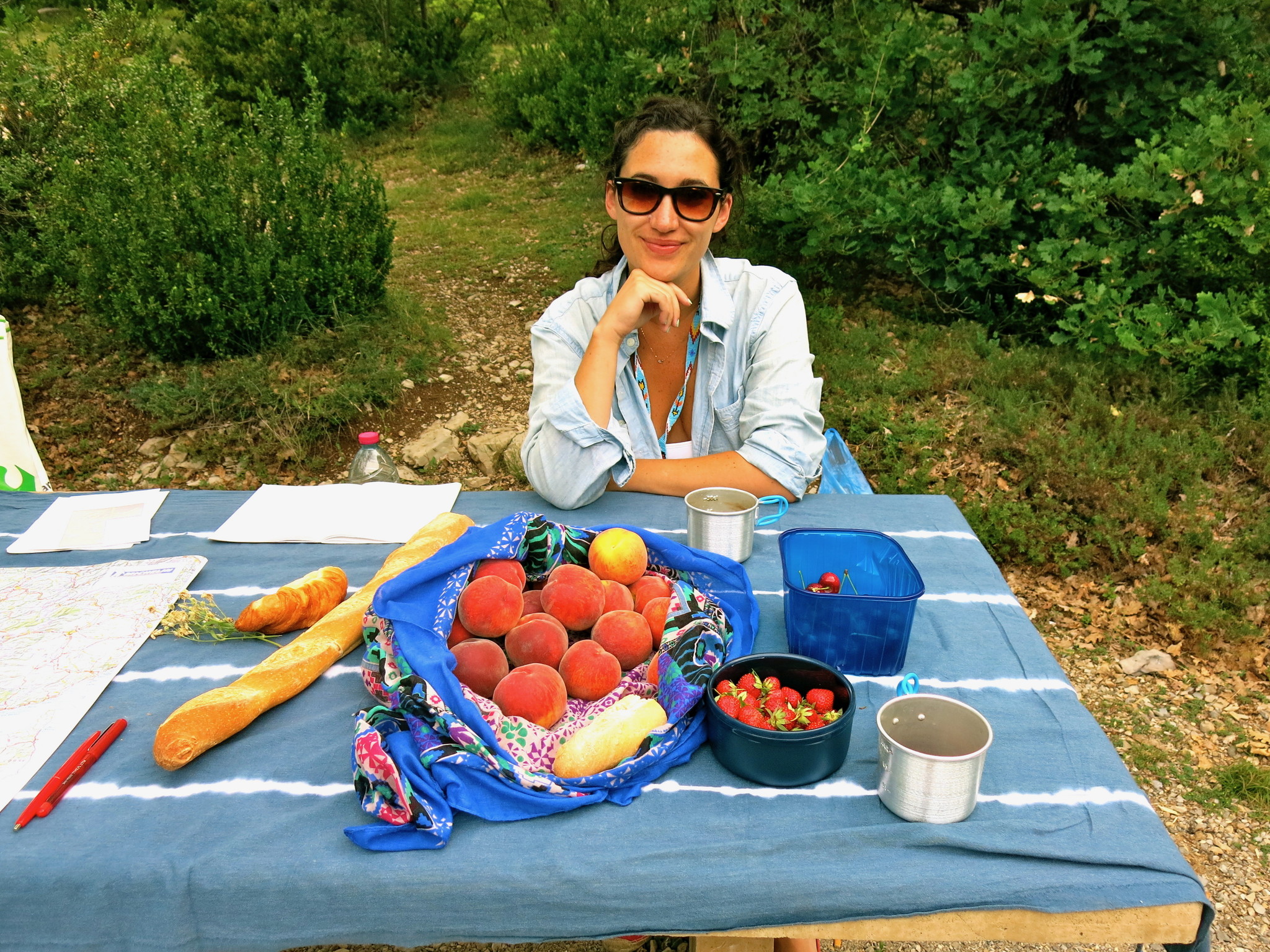
A very un-tragic roadside scene, tin cups and tie-dyed-Turkish-towel-as-tablecloth, mapping the next road trip sauvage stop in the Dordogne, France.
J: Speaking of history, you are a fantastic writer. I am personally a fan of your writing, and I always have been in its various forms that I've gotten to experience it. How did you get to be so good? What has been your path to becoming a writer?
S: Oh my! Thank you. That is a hard question. I guess, I have always loved words, books, and poems ever since I was just the very littlest person, and I would just be a voracious reader and a writer. I wrote all the time, songs and poems, and I was always moved by books and the magic of a world you could build. I guess, in a romantic way, I always felt like I might be a writer of a great novel, but that ended up never being my path. I always had this feeling, like: "I'm going to write a BIG story," but then it turned out I had too many little stories to tell.
I was an English major in college and loved reading Whitman, Blake...all of those mystical dudes. When I was in school, what I do now wasn't a job that existed. It's like, "I could create infinite beautiful tiny worlds for people to discover?" I found my way to content and copywriting pretty organically through working with some retail startups in New York City when I was living there. I'm in the mountains now, but I was in New York for 10 years, which is where I met you and then became looped into The Foundry family.
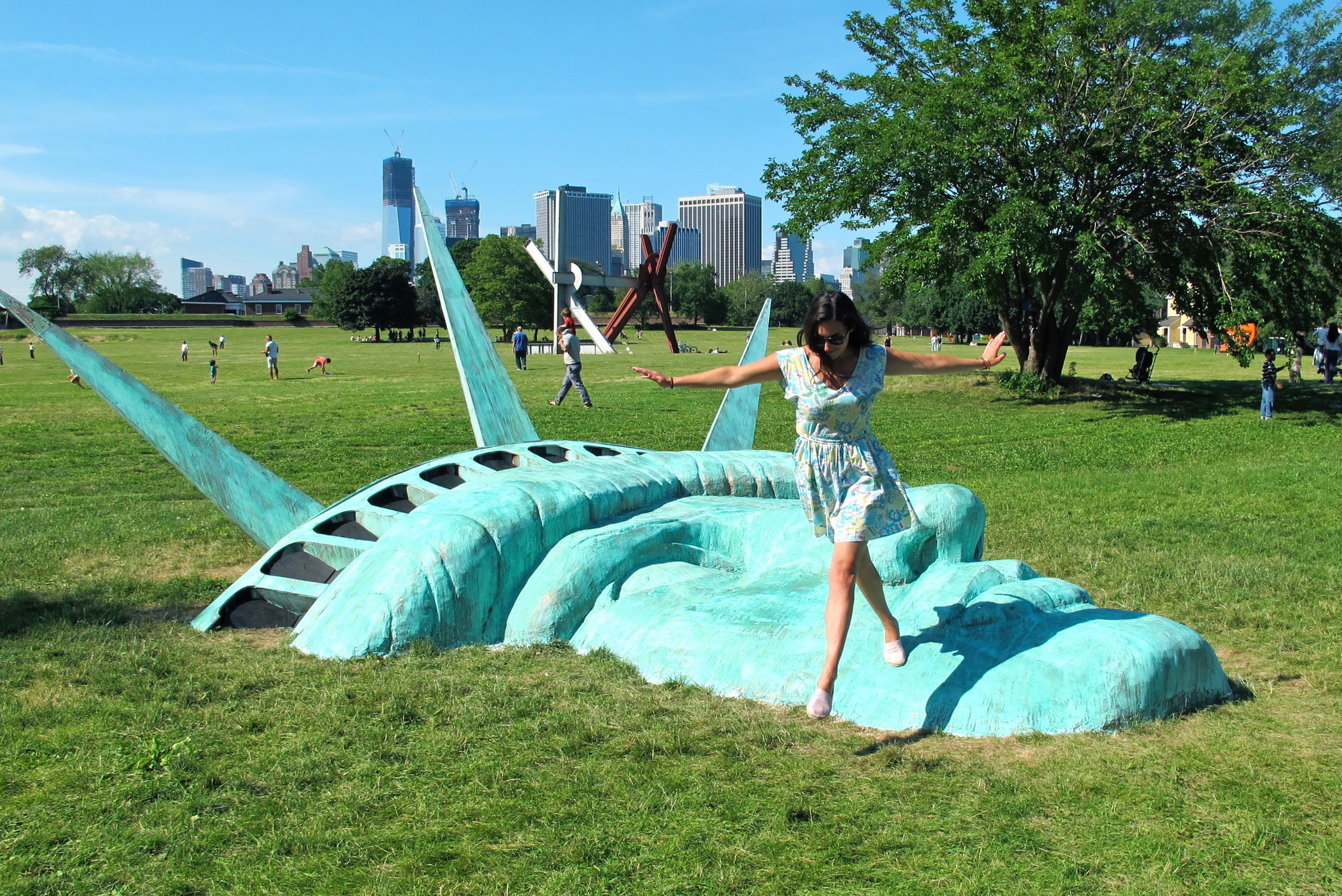
J: Maybe you could tell a little bit about your relationship to music, and history, or songwriting.
S: I have a deep and long history with music. I come from a family of musicians. My parents were both touring musicians before my brother and I were born, and we grew up playing and singing always. We have a family tradition of writing a song, or taking a song that exists and writing new words for it, for big life events. When my husband, Andrew, and I got married, my parents sang a song that they had written that's based on an Emmylou Harris song. That's probably one of the earliest songwriting things. Writing and performing songs together for these big life events. I guess it's sort of an easy allegory to the power of music, the tie-in of the performative creative aspect that follows the thread along the story of your life.
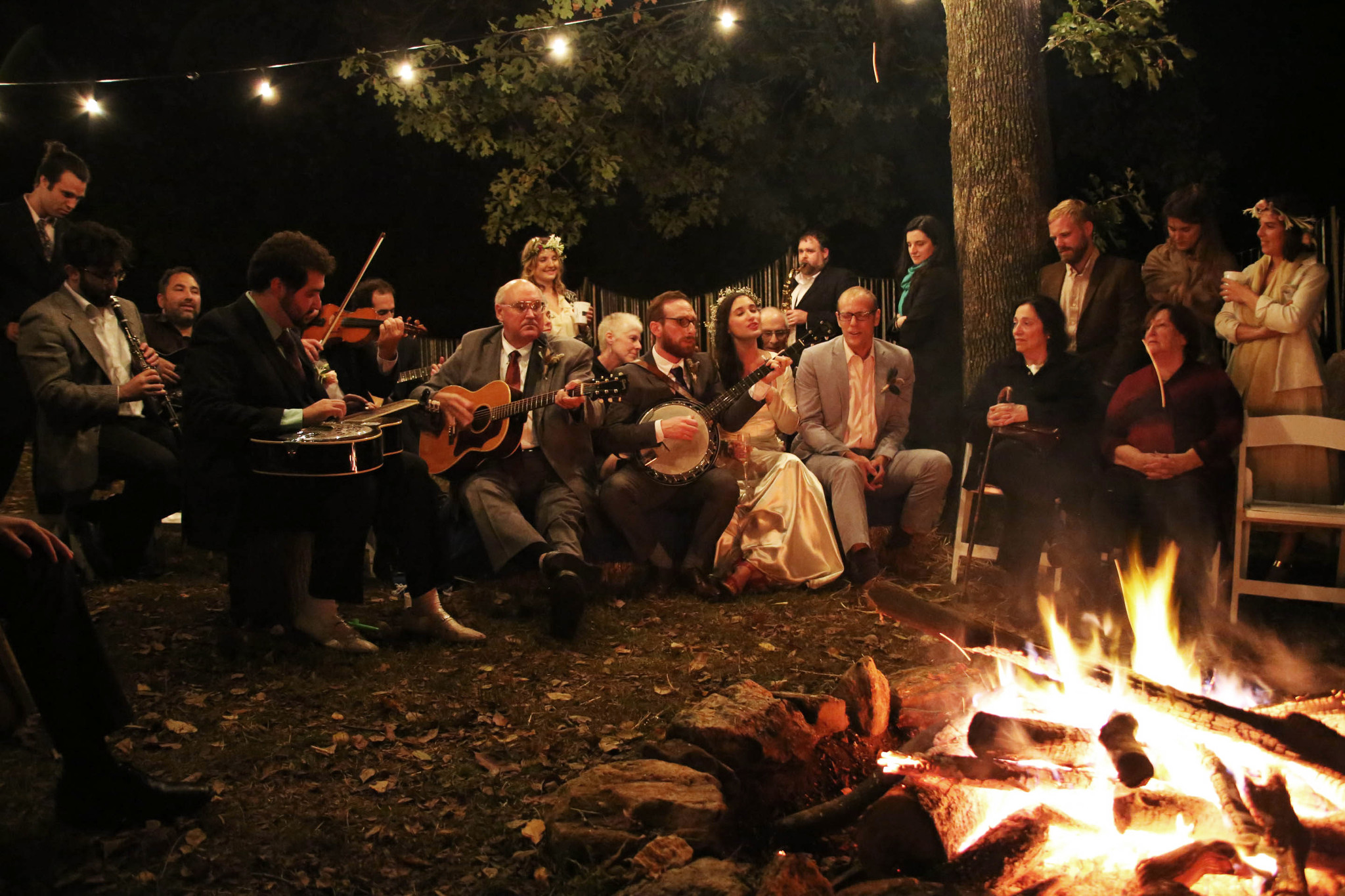
Susannah at her wedding, flanked by Jay, husband, Andrew (banjo), and her father, Bobby, (guitar), singing together.
I always sang and played in bands. I took piano lessons when I was little and I play the acoustic guitar. When I moved to New York, I had recently had a breakup, and I was moping around (well as much as one can mope when one has just arrived in New York City...I guess alternatively moping around/raging around being like, "New York City HERE I AM!!!") playing my acoustic guitar, working on songs, and trying to capture that young angst and big feelings of heartbreak. In retrospect, maybe also thinking, "If I don't get some good songs out of this breakup, what the hell!" So I was going around the apartment with my big yellow legal pad feverishly writing stuff down and crooning, and my roommate at the time, he said, "You should get in touch with my ex-girlfriend's brother's band," probably like "get this girl and her guitar OUT of this apt" and I said, "Great. I will definitely do that." That band turned out to be Red Rooster (Foundry note: Jay's long-time band).
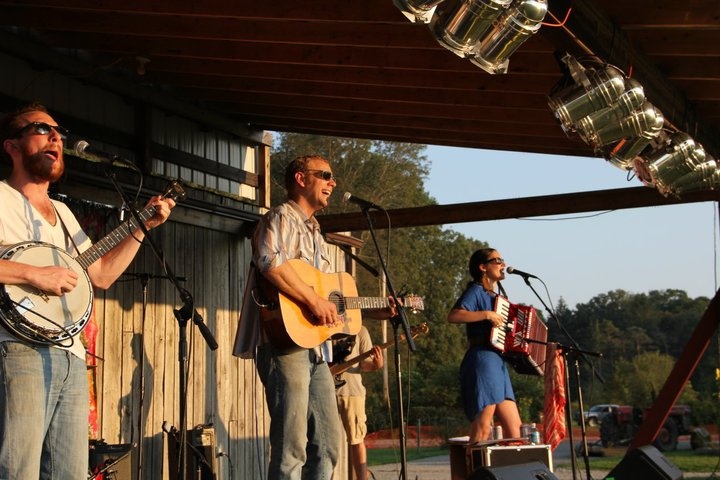
J: Are you playing music now?
S: Yes, I am. I am playing music now. In Red Rooster, I didn't play any instrument to start because I played the acoustic guitar, and that band already had multiple guitar players and 11 other people that were in it playing an instrument, so I was just singing. But I desperately wanted to be playing an instrument, so the banjo player, who is now my husband...we had known each other for a couple of years within the band before getting together, you thought it was going to break up the band when you found out! We had been dating for two or three months maybe when my birthday came around, and he gave me an accordion. Sort out of the blue, after only having been dating for a few months. Which I think is a bold adventure and a bold choice.
J: A big move.
S: A big move. Strong. Because it could really go one of two ways. It went the good way. The accordion was in a monogrammed case with my initials on it and I thought "Man, this guy really gets me in a way I didn't even know I could be got".

J: What are some of your personal favorites that you use on a day-to-day basis, Foundry Home Goods?
S: I got one of the mini Chari Baskets for my daughter Lois but then decided I had to keep it for myself.
J: What's that?
S: It's amazing! It's like a fishing creel style basket that has little loops on the back so you can attach it to bike handlebars as well as a strap that you can wear like a backpack or like a purse but I like to wear it around my waist when I'm out exploring, finding finds.
J: Finding finds?
S: Oh gosh, like, my favorite thing. I am always on the lookout for feathers or bones or special rocks or seaglass...just finds. It's amazing what you can find if you are simply engaged in the radical act of being present and paying attention. My pockets are always full of acorn caps and old pennies and stuff. I brought the basket for Lois on a trip down south to visit my best friend Ravenel at her lowcountry farm, and she and I were walking through a just-plowed field and kept finding all of these ancient flint-struck arrowheads. I put them in "Lois'" chari basket and strapped it on never looked back. I had already stashed a few feathers and a dove call in there "for her" so it's not like it was too big of a leap.
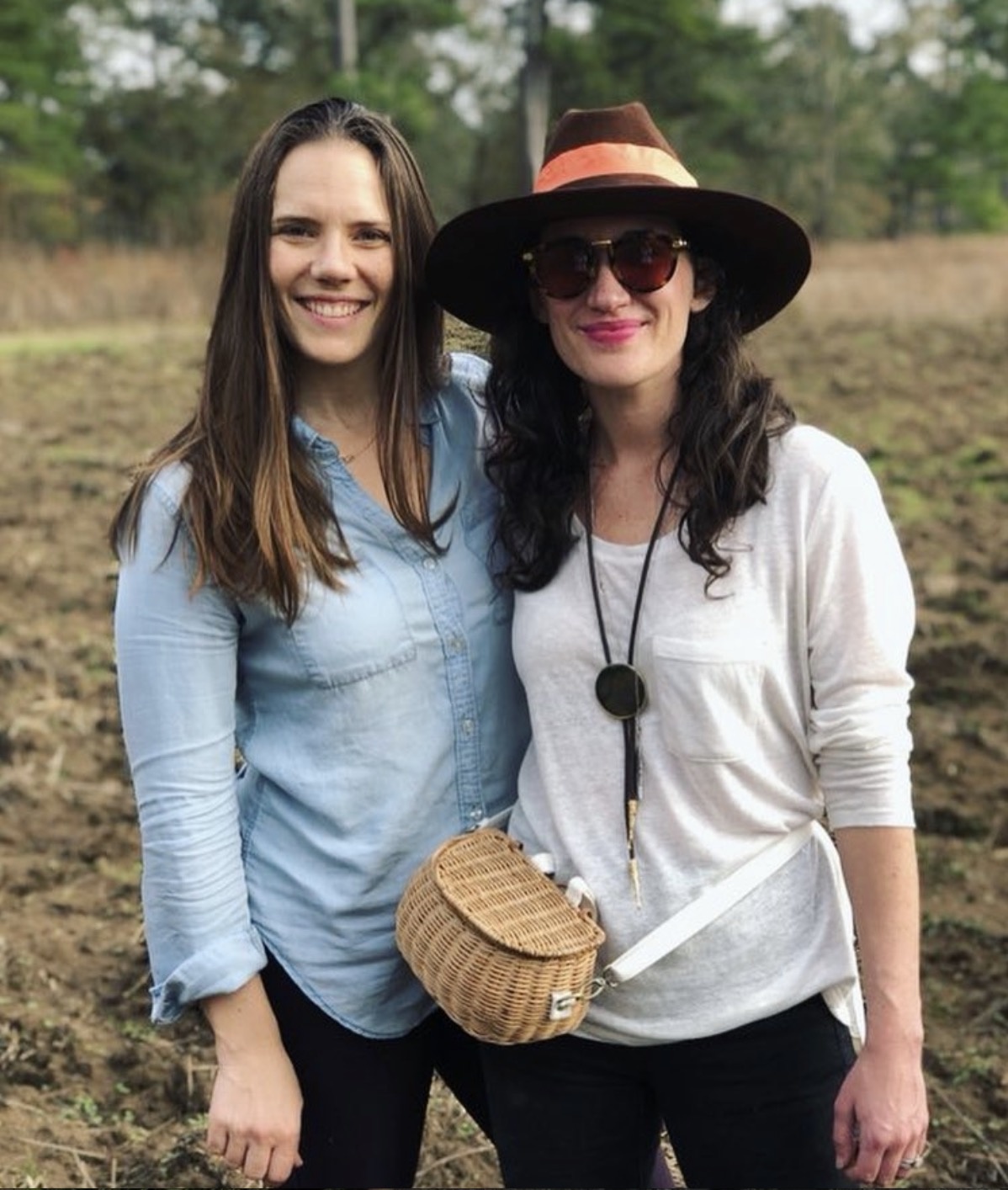
S: Also one of the biggest revelations has been the brushes, which I think has been a real a paradigm shift in my daily. The specialized dish brushes and the brush-that-is-basically-perfect-for-cleaning-coffee-mug-dregs-you-let-sit-on-your-desk-for-12-hours have really changed how I interact with my whole kitchen and sink systems in this way. I also keep a little hog hair nail brush there which has become totally essential. Especially since my gardening style since Lois' arrival has been much less "dedicate an entire glorious afternoon tending and therefore do something sensible like wear gloves" to "blitzkrieg pull any crown vetch you happen to notice encroaching on the anemones on your way back from dumping the compost and come back inside with coal miner fingernails".
J: Would you say there's before brush and after brush? Do you look at your life that way?
S: I do. Maybe it's more like the existence of the gnarliest sponge that ever was, and then the banishment of the gnarliest sponge there ever was.
J: Post-gnarly sponge era.
S: Yeah. We're living in that post-gnarly sponge paradise right now. Oh! Another thing that's not, like, an "everyday item" since I don't go into my beehives every day, is a horsehair bee brush that The Foundry Family gave me for Christmas last year. The Foundry doesn't normally stock them since it's such a specific item (like, only a beekeeper would know what it is) but Lillian and Anna saw that their German brush maker makes them and they special ordered it for me. My heart was so full. It is so beautiful and essential. You use it to brush bees off of frames gently and safely when you're working in the hive. It's particularly useful when you're getting ready to harvest honey and want to be sure you don't bring any bees with you into the honey house. (Foundry Note: though we don't keep these bee brushes in stock, we'd be happy to place a special order for any interested beekeepers!).
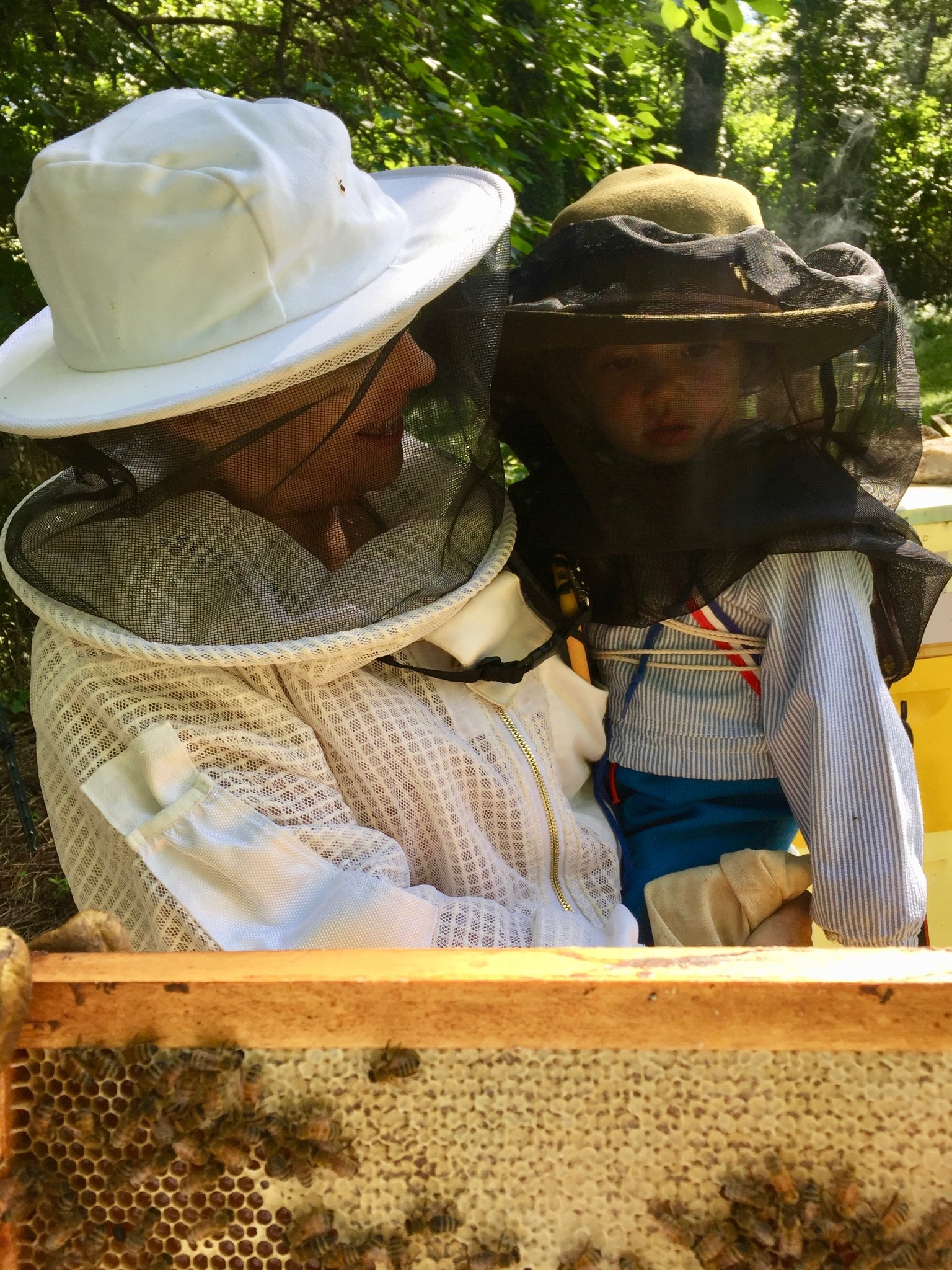
Lois, in her special bee suit, with her grandmother, Ann, in the Fennario Beeyard. Susannah is holding the honey and taking the picture.
J: That's amazing. What would be on your wishlist that's in The Foundry catalog?
S: I have a shocking level of covetousness for so much of it, and I feel like what I am lusting after at any given moment is literally whatever is the most recent thing that I've been writing about. I just did a deep dive into the Northern Dyer botanical dyes. It's a small company run by woman who lives in Minneapolis and has her own botanical dye garden and also does a lot of wild dye foraging I think perhaps she's a legitimate elf. I just did a bunch of research into the history and culture of natural dyes and dyer's woad, which is what would make a deep indigo blue color, and using marigold petals, which makes this super-saturated Hare Krishna yellow color.
Right now, I have a high covet level for that. If I lived in Minneapolis, it would be so dangerous. I count on time and distance to keep myself in check a little bit, because then I have to take a step back and be like, "All right. How many seed-to-dye kits do I actually need??"... Because that's also the thing. These dye kits, she gives you the seeds to plant the plant and then instructions on how to cultivate it, grow it, then harvest it, pluck the leaves, and then how to use the leaves to dye.
J: I mean, it's to dye for.
S: It is tie dye for. I don't know. The dyes. Maybe the Great Dixter spade, honestly, would be the thing.
J: That's from the new Dutch shipment of Garden Tools?
S: Mm-hmm and Great Dixter is an iconic, beautiful old garden in England that was landscape architected by this legendary British gardener. He was well known, unlike many British gardeners, for having all of his plants very close together in this super wild, really beautiful, organic way so that the heights and the grow times of them are all specifically in tune so that it's always really lush, and there's always a bunch of textures. But to do that, you need a special short shovel that you can get into each tight spot and get out the plant that you want to take out and then surgically extract it or plant a new one in a super-specific place. That gardener, or his heirs, talked to Sneeboer, the Dutch tool company, to make a spade that is exactly to that specification. That, my friends, is the Great Dixter spade.
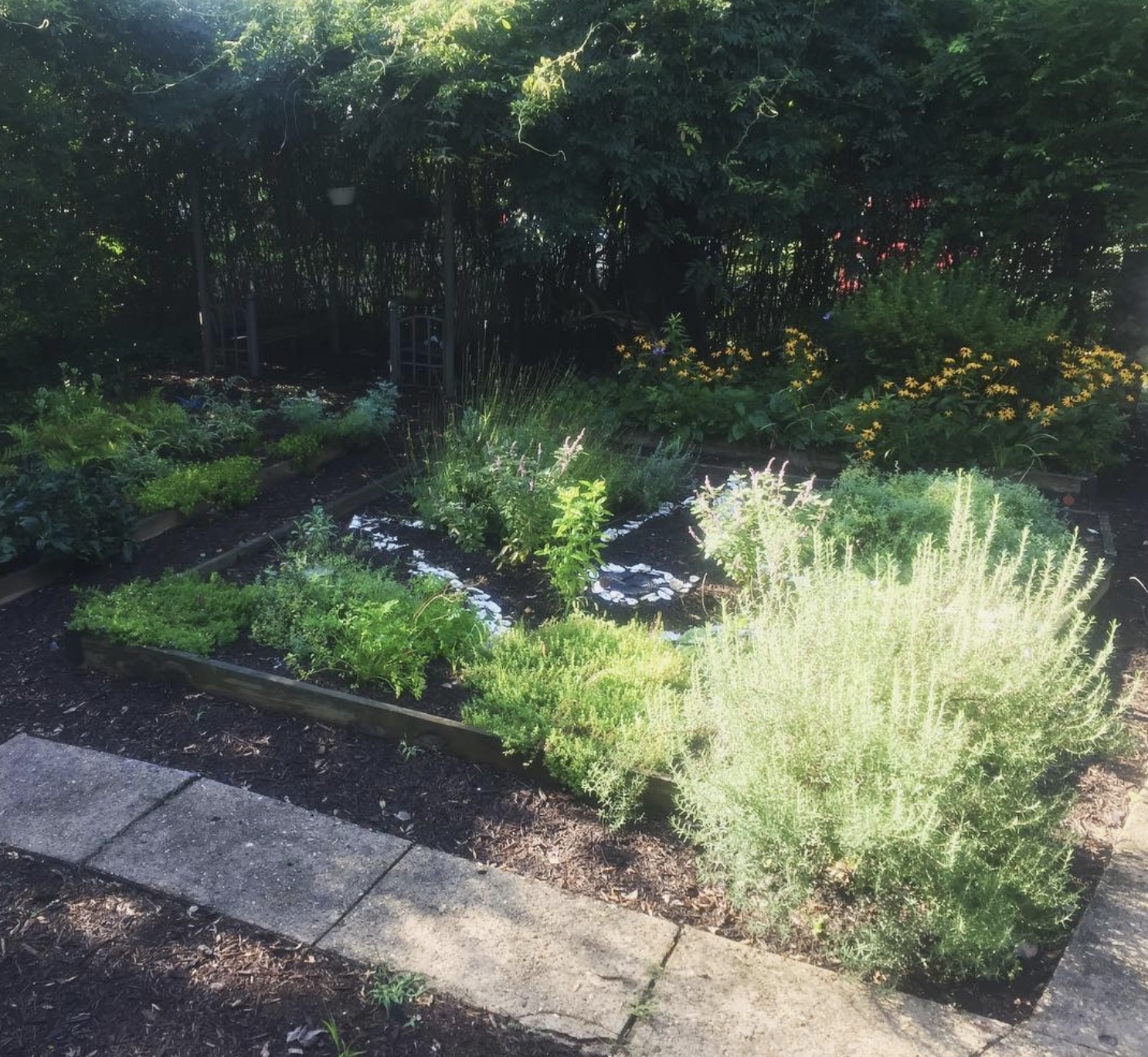
Susannah's kitchen herb garden, future home of Great Dixter Spade interventions.
J: What makes The Foundry family a family? What do you feel like the team culture is, and how is it unique and special?
S: Honestly, I've worked with a lot of retail teams, and I've never seen anything like it. It is just so marvelous, lovely, and real. You're interviewing me right now, or I guess I'm just talking at you right now, but I have had the opportunity to interview the other Foundry family members, which has been just so wonderful, almost surprisingly so. We set aside 20 or 25 minutes out of their day, and then I end up talking with each of them for an hour and a half. They're just beautiful people, and they're legitimately passionate about so many interesting things. All of the things that they're passionate about organically tie back to their strengths and their passions as they are manifested at The Foundry.
J: If there's some fun fact that people would be very surprised to know about you, what would that be?
S: Surprised to know? Oh, my goodness. I'm actually an introvert.
J: Whoa. Good one.
S: Do you think there's anything surprising about me? I feel like I'm pretty much just myself.
J: I don't know, because you're so familiar to me that nothing is coming as surprising, but I'm sure there's something that would...I'm trying to think of what people out there in the blogosphere might be surprised about.
S: I have custom made monogrammed cowboy boots with my initials on the back of one heel and my accordion on the back of the other.
J: That's a fun fact. We're going to need a picture of that. What else?

S: I always wear pink mood lipstick from Morocco.
J: That, I didn't know, but not surprising.
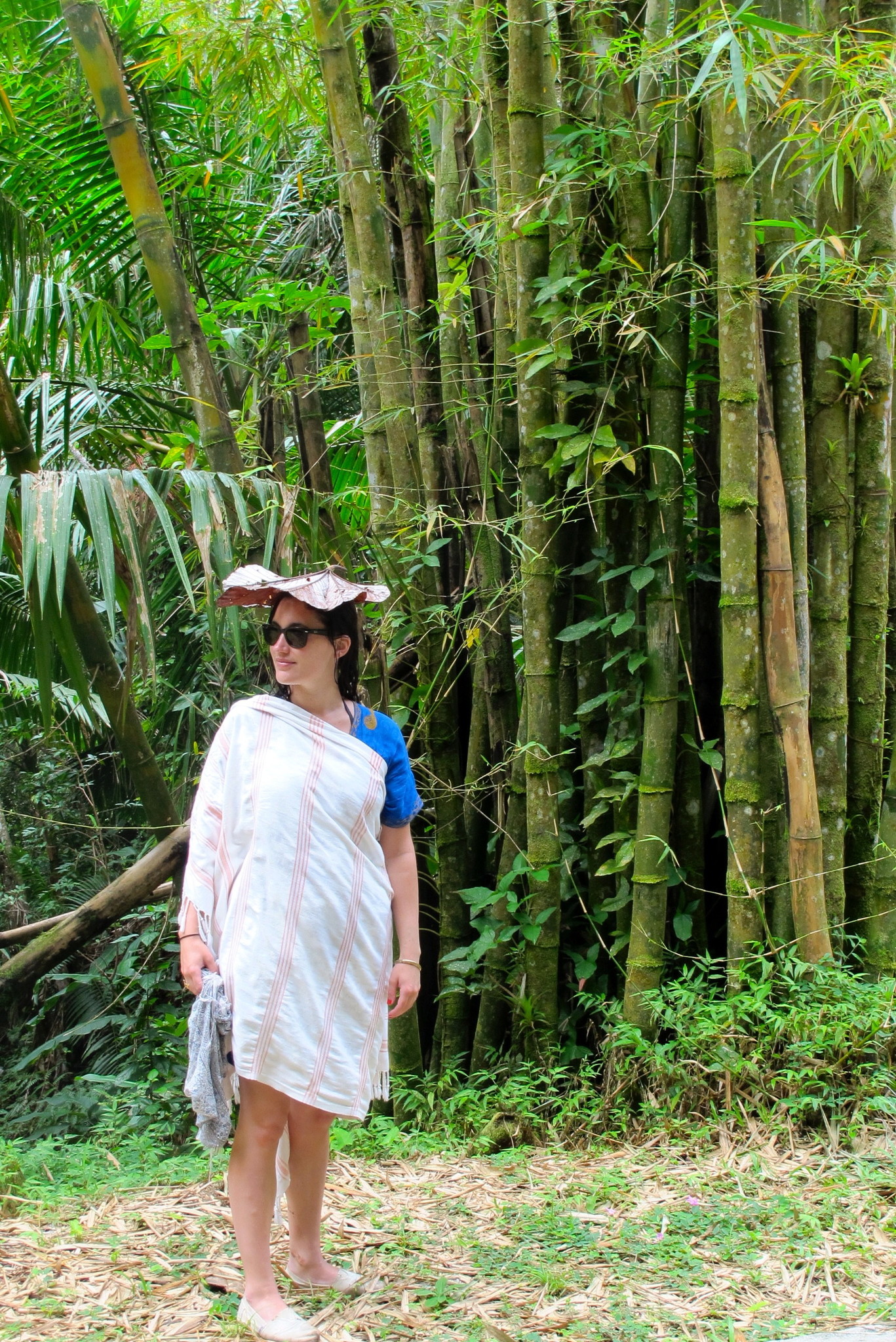
S: I always travel with a Turkish towel. I like to go swimming whenever humanly possible. I've been in some very cold water, but I've never regretted it, ever.
J: That's a great quote.
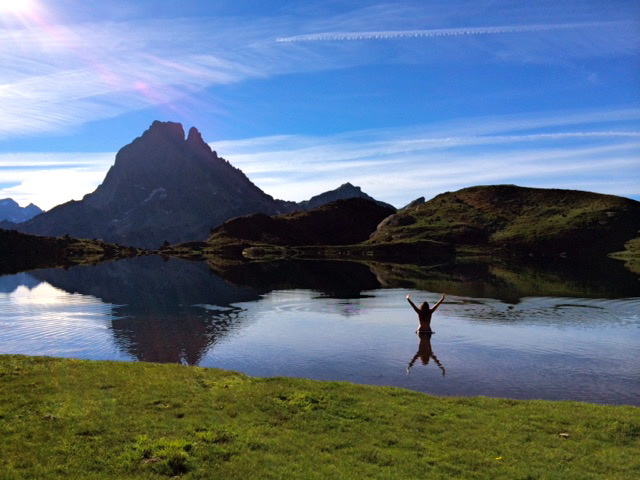
The coldest water ever she swam: glacial melt, Lacs d'Ayous, Pyrenees. NO REGRETS.
J: Lastly: are you more of a Ruby or a Turnip?
S: Well, I thought about it beforehand, and I'm actually a Sophie.
J: Ooh. A Sophie. Ruby's and Turnip's cousin. (Deep Foundry reference for those of you who may remember Ruby wearing Sophie's old stitched leather collar in her first wild years of North Loop living).
S: Yes. Because you know, we're on the same level, I'm part of the family, but I'm not there. But I'm making my own magic elsewhere and I love to be interconnected in their universe. It's like we're in the constellation of sisters, even if we aren't in the same place all the time.
Whew. That was a long one! Leave it to the wordsmith to use all the words. Thank you, Susannah, and thank you, Jay!

This is a lovely interview and Susannah sounds lovely. One question though... if she re did the inside of that cute little scamp can we see it? pretty please